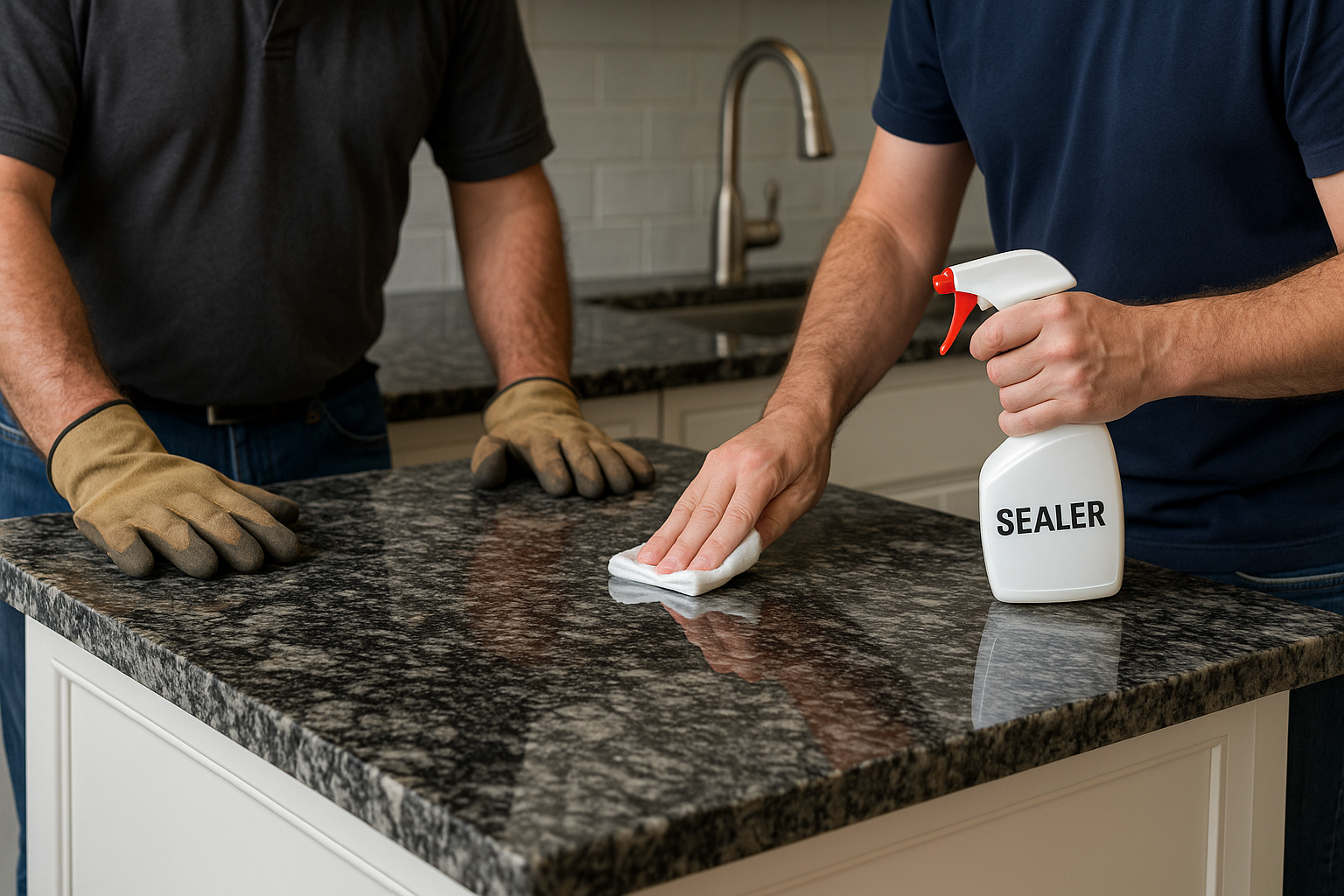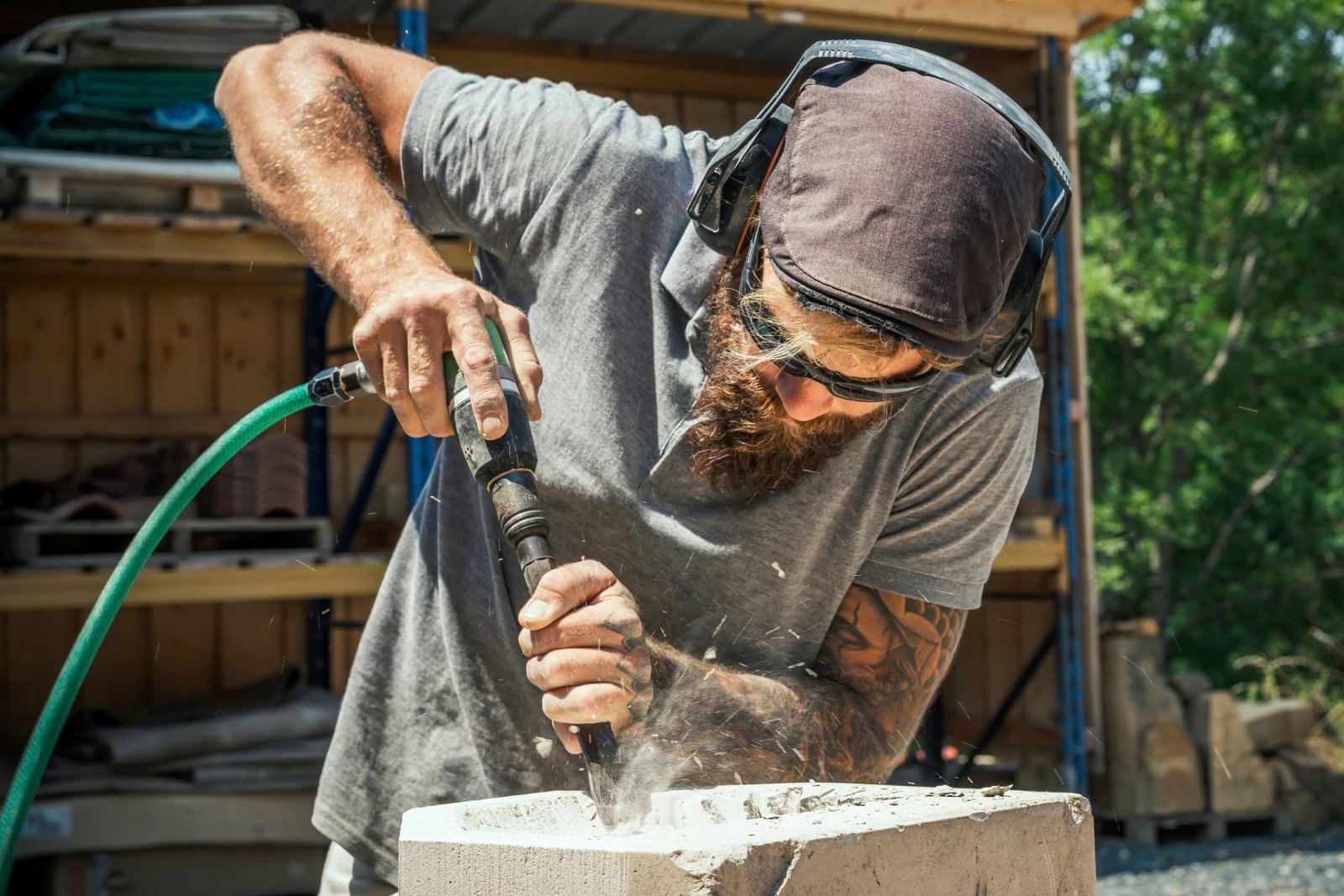
Granite countertop has become a leading choice for kitchen and bathroom renovations, admired for their elegance, strength and ability to elevate interior design
Granite countertop have become a leading choice for kitchen and bathroom renovations, admired for their elegance, strength, and ability to elevate interior design. However, granite is a natural stone with porous properties, making sealing an essential part of the countertop installation and maintenance process. This leads to a frequently asked question among homeowners: Who is responsible for applying the sealant on a granite countertop—the installer or the homeowner?
This in-depth guide explores the roles and responsibilities of both parties, outlines when sealing should occur, and provides tips to ensure long-term granite countertop maintenance.

Why Sealing a Granite Countertop Is Essential
A granite slab may appear solid and glossy, but beneath its surface are microscopic pores that can absorb liquids. Left unsealed, these pores can lead to:
- Staining from food and drink spills
- Water absorption and moisture damage
- Bacterial growth from trapped contaminants
- Deterioration of the stone’s shine and texture
Sealing acts as a protective barrier, enhancing the lifespan and preserving the beauty of your kitchen countertop. It also plays a key role in preventing granite countertop repair caused by neglect or long-term wear.
To understand which parts of the countertop need the most protection, visit Where Are the Most Critical Areas to Apply Sealant on a Granite Countertop?
Installer Responsibilities During Countertop Installation
What Installers Typically Cover:
Professional granite installers are primarily responsible for preparing, fitting, and completing the installation of the countertop. Most reputable companies will apply the initial layer of sealant at the end of the installation process.
The installer’s responsibilities often include:
- Cleaning and preparing the granite slab before sealing
- Applying a single coat of sealant across the countertop
- Buffing the surface to enhance its finish
- Advising the homeowner on basic aftercare procedures
What They’re Not Responsible For:
- Long-term resealing or follow-up maintenance
- Sealing areas that were not part of the original installation
- Providing extended warranties on sealing durability
In most cases, installers treat sealing as part of their countertop installation package, but the long-term responsibility transitions to the homeowner once the project is complete.
Homeowner Responsibilities After Installation
After installation, the granite countertop becomes the homeowner’s responsibility to maintain. This includes routine cleaning and resealing the surface as needed to preserve its function and appearance.
What Homeowners Must Do:
- Conduct a water-drop test to monitor sealant effectiveness
- Reseal the countertop every 12–24 months based on usage and granite type
- Use pH-neutral cleaners for granite countertop cleaning
- Avoid harsh chemicals that can break down the sealant
- Wipe up spills immediately to prevent staining
Just like you would service your appliances or maintain your flooring, caring for your granite countertop is part of being a responsible homeowner.
When Should a Granite Countertop Be Sealed?
Timing is key to maximizing the benefits of sealing. Ideally, sealing should be done:
- Immediately after installation (by the installer)
- Once a year or as needed (by the homeowner)
- After deep cleaning or chemical exposure
For a full breakdown of timing and sealing stages, check out When Should Granite Countertop Be Sealed During the Installation Process?
How to Determine If Your Countertop Needs Resealing
The Water Test
- Drop a few water droplets onto the granite surface.
- If the water beads up, your sealant is still effective.
- If it begins to darken or absorb within 5–10 minutes, it’s time to reseal.
Additional Signs:
- Dull or uneven finish
- Increased difficulty in removing stains
- Discoloration near sinks or cooktops
- Sticky residue or rough texture
How to Apply Granite Countertop Sealant
Step-by-Step Guide for Homeowners:
- Clean the Countertop Thoroughly
Use a granite-safe cleaner to remove oils, dirt, and residues. - Dry the Surface Completely
Wait at least 24 hours after cleaning before applying sealant. - Apply a Penetrating Sealant
Use a clean cloth or sponge to evenly spread the sealant. - Let It Sit
Follow the product’s instructions for drying time (usually 10–15 minutes). - Buff the Surface
Wipe away excess sealant with a soft cloth to avoid hazy residue. - Repeat If Needed
Some granite types require multiple coats. Conduct the water test again after curing.
Choosing the Right Sealant
With various sealants available, homeowners must choose a product that matches their countertop needs:
Types of Sealants:
- Impregnating Sealers: Penetrate deep into the granite for long-lasting protection.
- Color Enhancing Sealers: Enrich the natural tones of granite countertop colors while sealing.
- Topical Sealers: Sit on the surface and may require more frequent reapplication.
When purchasing a sealant, ensure it is specifically designed for natural stone and is safe for food-prep areas.
Communication Tips for Installers and Homeowners
To avoid disputes or misunderstandings, communication between the installer and homeowner is key. During the planning phase, ask the following:
- Is sealing included in the countertop installation contract?
- What type of sealant will be used?
- How long will the initial sealant last?
- Are there warranties on sealing performance?
- Do you offer a sealing guide or product recommendation?
Final Thoughts: It’s a Shared Responsibility
So, who is responsible for applying the sealant on a granite countertop—the installer or the homeowner?
The Answer:
- The installer is responsible for initial sealing during or immediately after installation.
- The homeowner is responsible for resealing and long-term maintenance of the countertop.
Understanding and accepting this shared responsibility ensures your granite countertop remains as stunning and functional as the day it was installed. With regular care, proper cleaning, and scheduled sealing, granite surfaces can last for decades—retaining their brilliance and value.

